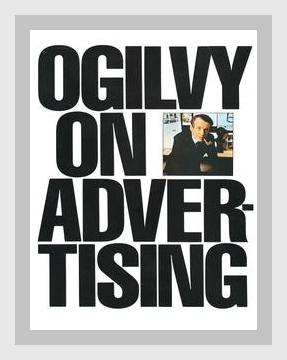Marketing and SalesAdvertising
Introduction
David Ogilvy’s “Ogilvy on Advertising,” published in 1985, serves as a comprehensive guide and reflection on the advertising industry. Drawing from his extensive experience, Ogilvy offers actionable advice, concrete examples, creative techniques, and a deep dive into various facets of the advertising world.
1. The Fundamentals of Advertising
Ogilvy emphasizes that effective advertising hinges on a clear sales proposition. He underscores the importance of understanding the product and the audience.
- Actionable Advice: Know your Product and Audience.
- Example: Research which features of your product resonate most with consumers, as Ogilvy did with the Rolls-Royce advertisements, highlighting “At 60 miles an hour, the loudest noise in this new Rolls-Royce comes from the electric clock.”
2. Research and Analysis
According to Ogilvy, research is the cornerstone of success. He advocates for pre-testing advertisements to gauge their effectiveness before launching them.
- Actionable Advice: Implement Pre-testing.
- Example: Ogilvy describes how he used consumer research to optimize the Hathaway Shirt campaign, featuring the iconic man with an eyepatch, which significantly boosted sales.
3. Advertisement Composition
Ogilvy breaks down the anatomy of an effective advertisement, detailing the significance of headlines, visuals, and body copy.
- Actionable Advice: Craft Compelling Headlines.
- Example: He points to his own advertisements for Schweppes, where the headline “Schweppervescence” captured attention and curiosity.
4. Visuals and Imagery
Imagery plays a critical role in the effectiveness of an advertisement. Ogilvy asserts that pictures should be engaging and relevant to the product.
- Actionable Advice: Use High-Quality, Relevant Imagery.
- Example: In the campaign for Dove soap, Ogilvy used simple, clean imagery of women and focused on the product’s benefit of being gentle on the skin.
5. The Power of Branding
Ogilvy places significant weight on the development of a strong brand image. He believes that consistent branding fosters trust and loyalty.
- Actionable Advice: Invest in Long-Term Branding.
- Example: The creation of the character “Commander Whitehead” for Schweppes built a unique and memorable brand personality.
6. Television Advertising
Television ads require a distinct approach. Ogilvy advises that they should be clear, engaging, and repetitive.
- Actionable Advice: Create Repetitive and Clear TV Ads.
- Example: The “Hathaway Man” campaign was translated to television using the same eyepatch gimmick, ensuring brand consistency across mediums.
7. Direct Response Advertising
This type of advertising is designed for immediate consumer action. Ogilvy was an advocate of measuring success through direct responses.
- Actionable Advice: Use Strong Calls to Action.
- Example: The Zippo manufacturing company used print ads with strong incentives, such as “Send in your old lighter for a free refill,” which directly boosted sales.
8. Advertising for Nonprofits and Public Service
Ogilvy outlines how nonprofit organizations can leverage commercial advertising techniques.
- Actionable Advice: Apply Commercial Strategies to Nonprofits.
- Example: His campaigns for the United Negro College Fund, with the tagline “A Mind Is a Terrible Thing to Waste,” successfully attracted donations by tugging at emotional chords.
9. Positioning and Differentiation
Differentiation is vital in standing out in a crowded marketplace. Ogilvy promotes the concept of positioning: owning a unique idea of the brand in the consumer’s mind.
- Actionable Advice: Identify and Emphasize Unique Selling Points (USPs).
- Example: For Dove, the positioning was established around the concept that it was not a soap but a “beauty bar.”
10. Industrial and Business-to-Business Advertising
Here, Ogilvy highlights the unique challenges and strategies suitable for B2B advertising.
- Actionable Advice: Gear Advertising Towards Business Needs.
- Example: For Shell, an industrial client, he focused on technical benefits and economical advantages in campaigns, speaking directly to decision-makers’ needs.
11. Global Advertising
Ogilvy underscores the complexities and nuances of international advertising.
- Actionable Advice: Tailor Campaigns for Local Cultures.
- Example: For his work with British Airways, called “The World’s Favourite Airline,” the ads were globally consistent but adapted subtly for local sensibilities.
12. Advertising Agencies and Client Relationships
Client relationships are pivotal for an agency’s success. Ogilvy advises nurturing these relationships with transparency and creativity.
- Actionable Advice: Maintain Strong Client Relationships.
- Example: Regular and open communications, as illustrated by his long-term collaborations with clients like Shell and Dove.
13. The Essence of Great Advertisers
Ogilvy shares insights into the personal qualities and professional practices that, in his opinion, define great advertisers.
- Actionable Advice: Cultivate Curiosity and Diligence.
- Example: He praises the advertising legend Claude Hopkins, who meticulously tested his ads and understood consumer psychology deeply.
14. Ethical Advertising
Ogilvy firmly believes in the ethical responsibility of advertisers to be honest and avoid misleading tactics.
- Actionable Advice: Prioritize Honesty in Campaigns.
- Example: His campaigns avoided exaggerated claims, ensuring that advertising not only attracted but also retained customer trust.
15. The Future of Advertising
Ogilvy offers predictions and advice for the future of the industry, urging adaptability and continuous learning.
- Actionable Advice: Stay Ahead of Trends and Innovate.
- Example: He mentions the potential of computer technology in predicting consumer behavior, a precursor to today’s data-driven marketing strategies.
Conclusion
David Ogilvy’s “Ogilvy on Advertising” remains a seminal text that provides timeless advice and compelling insights. It urges advertisers to understand their audience, uphold ethical standards, emphasize strong branding, and continually adapt to changes in the marketplace. The actionable strategies and concrete examples presented in the book democratize effective advertising, offering a playbook for both novice and veteran advertisers.
